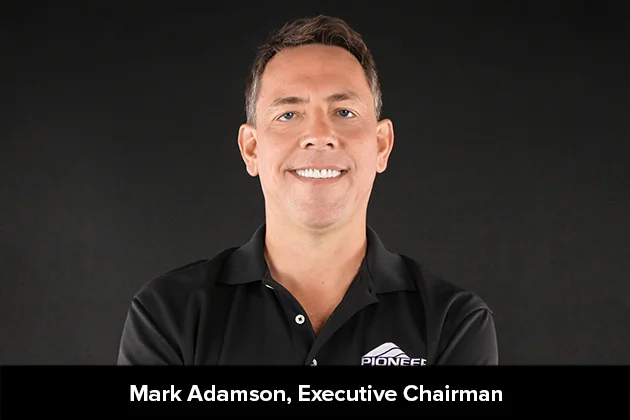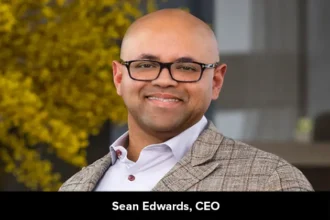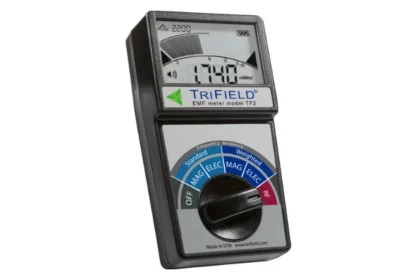Established in 1968, Pioneer is a leading distributor of landscaping and hardscaping materials in the western United States. With production facilities in Colorado and Arizona, Pioneer operates 34 retail distribution centers and a fleet of over 250 trucks, making Pioneer uniquely positioned to serve commercial, wholesale, and residential customers.
Here is something I learned when I was CEO of Formica Corp and a global credit crunch threatened more than half of the company’s $800 million in annual revenue. You can’t think small when you’re in turnaround mode. You need to think big, no matter what size company you’re running.
At Formica, we redesigned our business model and survived the financial crisis. Right now, I’m running a mid-size firm, about one-quarter the size of Formica, but even in a company that size, thinking big pays off. Here are a few ways the smaller firms among us can think big and get bigger.
Hire great talent from big players
How many times have you met someone who has worked for a bevy of competitive firms? I’m talking about the consultants who’ve jumped from PwC to Deloitte to EY or the systems engineer who has worked for three different big tech companies in the last five years.
Often people go from one corporate giant to another, but that’s not only the case. Mid-size firms should be open to finding amazing staffers who are ready to leave some huge company. These people will be taking their fabulous experience and training with them to help your mid-size firm succeed.
One of the reasons Pioneer was able to manage our fleet again is that we invested in the strategic enhancement of our information technology systems.
At Pioneer, we hired an expert in transportation who learned the ropes during his 29 years at Pepsi. We brought on an IT chief who used to work for Dish Network. Through hires like these, I’ve seen proof that many people at large companies would welcome the chance to work for a smaller firm where their contributions will have an enormous impact. Go ahead and hire above your weight class. Go for great people, and they’ll help you elevate your performance.
Drive profits home yourself
Amazon has its own fleet. So do brick-and-mortar retailers like Walgreens, Rent-A-Center and most major food chains. Why do these companies engage in the trucking business? Because it helps them control their logistics and keep costs down.
This is why Pioneer which had previously sold its fleet assets to a trucking company and then outsourced deliveries to that firm bought back its fleet assets early in 2021. At the time, I said, “This fleet buyback is an important step to gaining better control of product distribution and shipping costs and keeping prices down for Pioneer customers.”
After all, any company you outsource your deliveries to is running a business too. They’re watching their bottom line, and their priorities may not align with yours. That was our experience at Pioneer. For instance, when it came to paying drivers, they paid less than we do, which impacted recruitment. Then, sometimes, they didn’t have enough drivers to make the deliveries, so we paid them a monthly fee and still turned to third parties to get deliveries to our customers as promised.
At Pioneer, we pay our drivers well and reward them with great prize-winning opportunities. We also created our trucker training program where we would take someone without a commercial driver’s license and pay that person to handle bigger rigs. These drivers earn pay increases with each milestone they achieve. By the end of the year, these folks can have a CDL and be earning a 40% higher wage than they did when they started with us.
Our pay and rewards help us keep our driver pool staffed at a time when driver shortages have plagued other organizations in the U.S. for years. Industry experts anticipate a labor shortage of 64,000 truckers in 2023, and that could spike to 82,000 in 2024. It’s a relief to know that Pioneer is well-positioned to handle the labor pressures ahead.
Everyone needs IT
One of the reasons Pioneer was able to manage our fleet again is that we invested in the strategic enhancement of our information technology systems. Through this effort, we rehabbed a transportation management system so we would know where trucks were, whether they were on time, and how they were being maintained. The system also routes trucks for maximum efficiency, allowing us to get more value out of each vehicle.
We also integrated our point-of-sale and inventory systems so that we’d always know what was available for sale at our stores and when we needed to replenish stock. Most recently, we’ve focused on the customer side of our IT systems, too. We’ve stood up e-Commerce capabilities. That, too, is a form of thinking big.
Some consumers check Walmart’s website to see if an item is in stock at their local store. Some go to homedepot.com before leaving the house because it will tell them where in that big box they’re going to find what they’re looking for. Some just go online because they’d rather not spend the time driving over to the store to order what they already know they need or want.
Like Walmart or Home Depot, Pioneer’s e-Commerce site allows our customers to order what they want online. What makes this unique is that we’re selling bulk landscape and hardscape materials, and when we say “bulk,” we mean it. If you order bulk materials from a big box store, you’re still getting bags of rock, dirt, or mulch that you must open and empty, and you’re often required to buy an entire pallet of those bags.
We’ve created this type of convenience and functionality the same way the big players would with in-house, custom-designed systems tailored precisely to the needs of our associates and customers.
So many landscape supply companies have one person as the go-to IT expert and call it good. Pioneer has an IT staff of 10 people who run sophisticated systems and a massive data warehouse to facilitate our e-Commerce, in-store retail operations and a very advanced distribution capability. Between the tablets, we give our employees and all the computers that are hooked into our network, our IT team manages more than 6,000 devices.
Everything thing our IT team does on the development end of things is designed to make using those devices easier for our employees so they can focus more on our valued customers.
Many of our employees are not well-versed in computer use, so instead of having people go into an enterprise system and fumble along, our IT team makes web applications for specific roles that simplify complex processes into a few clicks on a website. Along with making life easier for our employees, this approach eliminates the need for extensive training and reduces the number of license requirements we have for our ERP systems. Plus, it frees up our IT support staff to focus on problem-solving rather than answering ERP-level questions from non-sophisticated end users all day long.
It’s moves like this that have made Pioneer a very efficient, profitable company, and now this company is in a perfect position to expand its market presence.
After all, businesses should grow, not merely survive, and the way to grow any business, especially a smaller one, is to think big in all you do.
Mark Adamson,
Executive Chairman
Pioneer Landscape Centers
Mark Adamson joined Pioneer as CEO in 2018 and is currently Executive Chairman. Prior to joining Pioneer, Mr. Adamson was the CEO of Fletcher Building, an $8 billion conglomerate of building products businesses based in Australia and New Zealand. Previously, he was with laminate company, Formica Corporation, where he ran their European division before assuming the role of CEO. Mr. Adamson also held roles in finance and management at Glaxosmithkline and Deloitte. Mr. Adamson earned a BA (Hons) Finance from Northumbria University in the UK and qualified as a Chartered Accountant with Deloitte.










